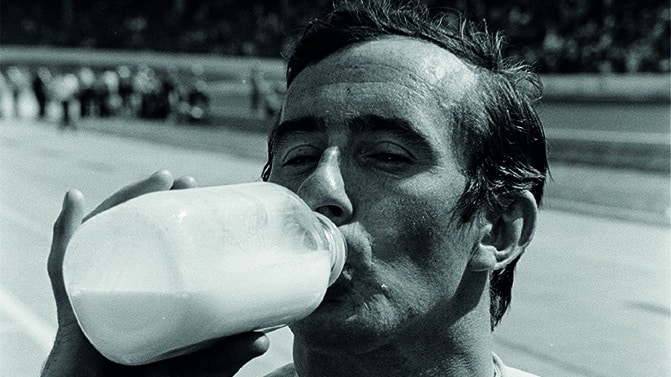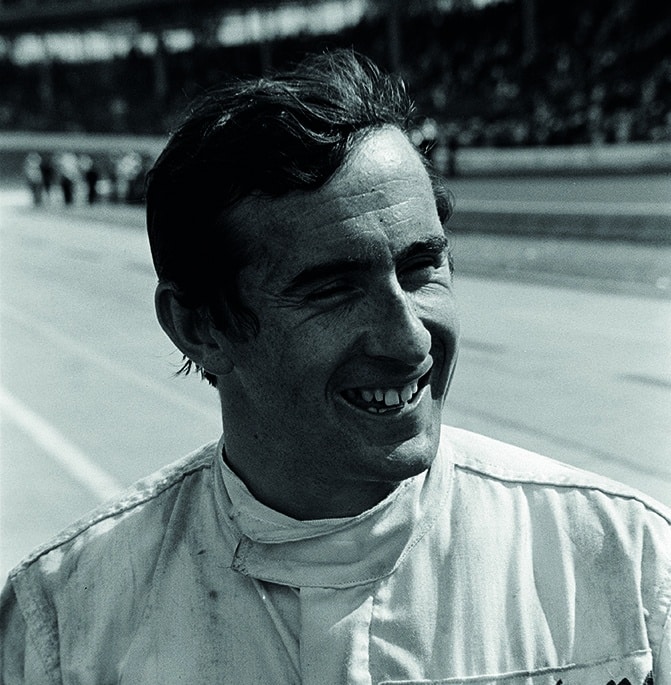1966 Indy 500
The dream Indy debut slips away. Indianapolis, July 1966
The 50th Indianapolis 500-mile race will be remembered for two major upheavals, other than the lap-one crash. Firstly, it is the end of an era, the era of the big hairy roadsters with brave middle-aged men driving them. Secondly, it is the start, regulations permitting, of the participation of scientific European road-racing teams, with their comparatively young, high-skilled drivers.
This year the front row of the grid consisted of three British chassis, a Brabham and two Lotuses, with Clark sandwiched between Andretti and Snider. The two American drivers had both been tyre testing at the track for some months and their cars were set as perfectly as could be possible, while Clark was complaining that his car was handling “like a pig”, which probably accounts for his two spins during the race.
Of the 33 starters, only one was front-engined, and he was the 33rd qualifier. Twenty-four cars were using the 4-cam Ford V8 engines, while the other nine were on Offenhausers. The Offenhausers were again split into three: three engines were 4.2-litre, twin-cam 4-cylinders, three were 2.8-litre, Roots-supercharged, 4-cylinder engines, and three were 2.8-litre, exhaust-driven turbocharged 4-cylinder engines.
This year not all the cars had offset suspension, the fastest qualifier, Andretti, had symmetrical suspension, as did all the Gurney Eagles. Although the suspension on these cars were not offset, the main fuel tank was on the left, so putting more static weight on the left-hand wheels. Tyre wear has improved to such a degree that, barring accidents, no one needed tyre changes. The 33 cars were split evenly on what tyres were used, 17 being on Firestone and 16 on Goodyear. Most of the Firestones were new low-profile tubeless tyres which had a weight saving of up to 5 lb. per wheel.

Stewart qualified on row four, and as top rookie, and nearly won outright before an oil pressure problem cost him late on
Andretti’s fastest qualifying lap was 4mph up on last year at 165.899mph, 3mph slower than his best time during tyre testing. So all was set for a new race record and lap record. The two British drivers racing here for the first time were well down on the number of flying practice laps they had done. Hill even missed the carburation tests on the Friday before the race as his car would not start. Stewart, however, managed to get in a number of laps and was feeling fairly happy. Whether it was because of Hill, a foreign visitor, not having been out in the carburation tests, but right against all tradition, a further half-hour was allowed after the still-engine refuelling practice, and Hill managed to get in eight laps before rain stopped practice.
The race itself was, in the opinion of regulars, the worst they had ever seen, and certainly no records were broken. The starting line crash began when Foster charged past Branson and hit Johncock’s back wheel, tearing off his own front wheel. He hit the wall and bounced back into the way of the middle and tail of the field. Eleven cars were damaged beyond repair and five cars were pushed to the pits to be worked on when the race restarted. The eleven were D. Branson, B. Foster, G. Congdon, A.J. Foyt, D. Gurney, C. Yarborough, A. Knepper, A. Miller, B. Grim, L. Dickson and R. Duman.

Indy success would ultimately elude Stewart, who would only make one other start. He led 40 laps of his debut
When the race restarted Andretti led Clark for a few laps but he was soon in trouble and was black-flagged for spreading oil. Clark went into the lead until he spun on his 65th lap and again on his 85th lap. On both occasions he showed the touch of the master by keeping his engine running, which brought praise from the “500” followers, who said this is unheard of. His spins lost him the lead to Lloyd Ruby and brought Stewart and McCluskey up close behind. One of the only highlights of this race was the battle for third place between McCluskey and Stewart when first one led, then the other, and Stewart really learned about track racing and gave better than he received, for eventually McCluskey dropped back to retire.
Hill had a lonely race, not really being involved in any major place changes, and as the leaders dropped by the wayside he moved slowly up. The road was beginning to get very slippery and track veteran Roger Ward retired his Lola merely because he considered the surface was too slippery for racing. This situation is what GP drivers have to put up with every weekend, and it really wasn’t surprising that after Ruby was black-flagged with oil pouring from a hole in his cam cover that the three British drivers were lying first, second and third.

Stewart eventually finished down in sixth, but was still voted as Rookie of the Year over rival, and race winner, Graham Hill
In the last few laps Stewart, in first place, began shaking his head for his scavenge pump had packed up and it was only a matter of time until the engine filled with oil. This happened on his 191st lap and he finished by pushing the car to the pits and sixth place overall. Hill now took the lead although, due to a scoring error in the Lotus pit, Clark was also being given P1 signs. He was soon disillusioned, however, when he drove to Victory Ally only to find Hill being “kissed and interviewed”.
If regulations are not imposed on foreign entries there may be many more road-racing drivers and cars at the 1967 race. McLaren and Amon were more than interested spectators. Mr. Honda, who was also present, has stated that he will build a car for next year. Ferrari would not have difficulty preparing a car which could stay the distance at a winning speed. If this happens then the myth of Indianapolis will become history and live only in the minds of those who can remember the “Golden Days”. MT